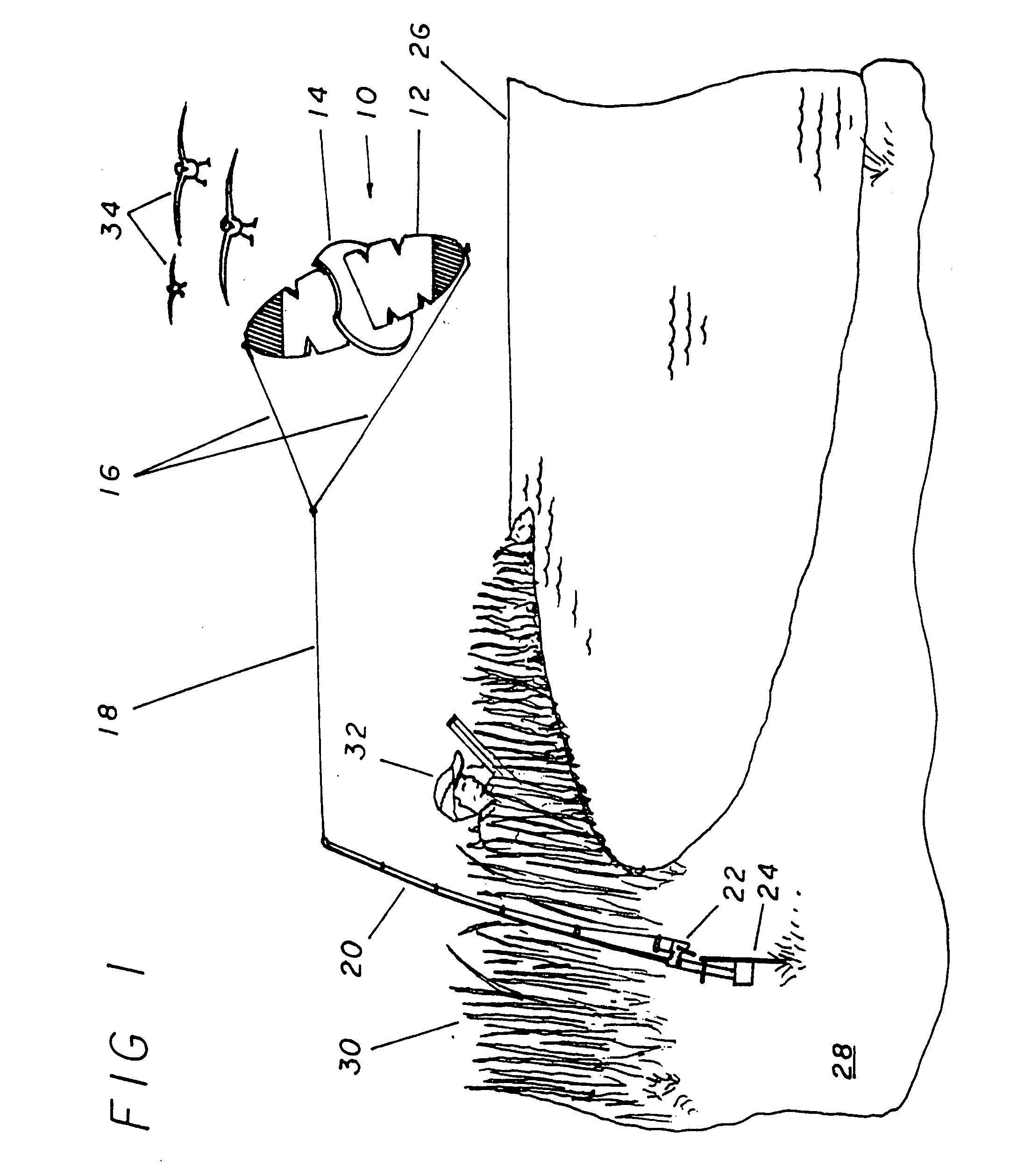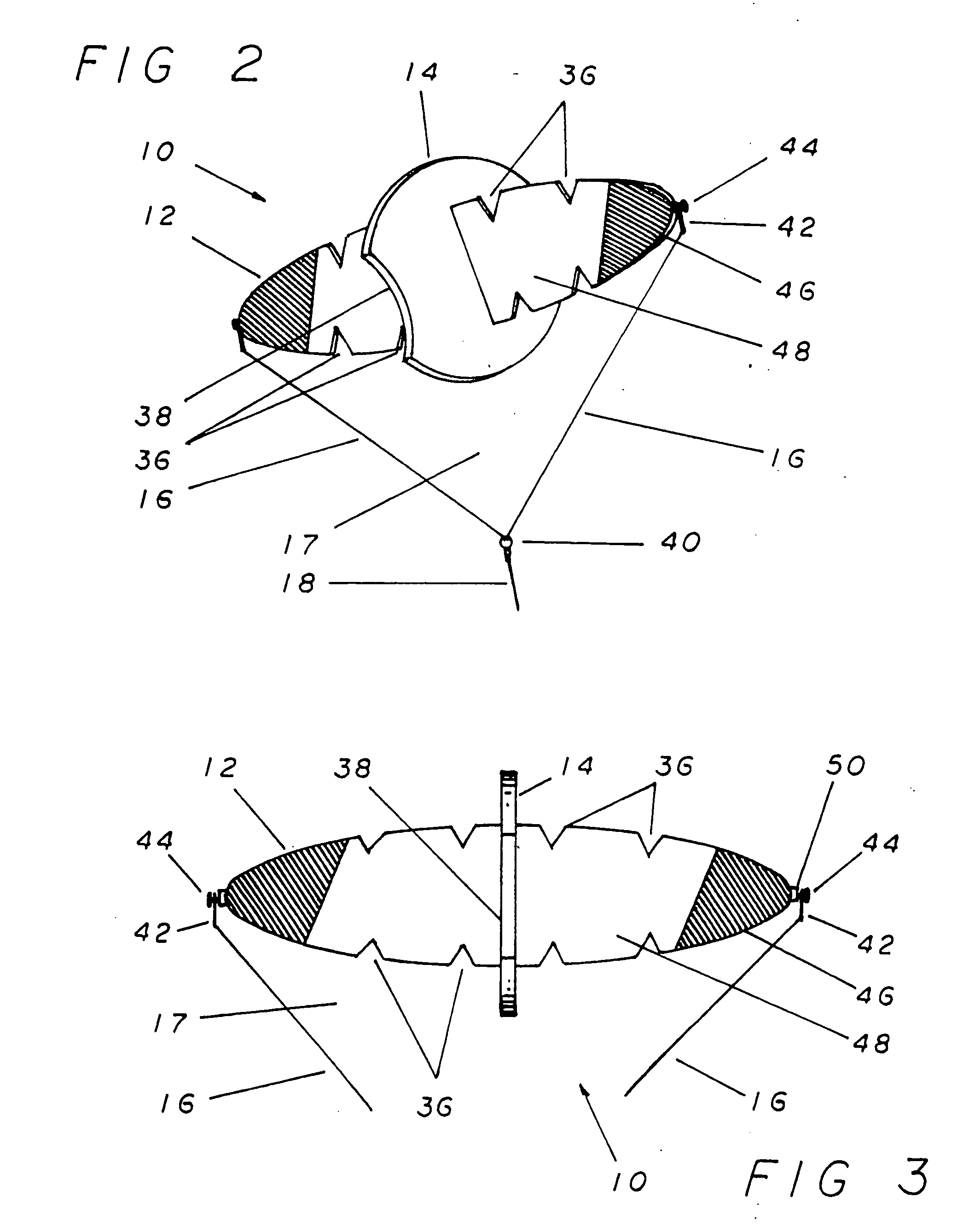Waterfowl decoy kite
a kite and waterfowl technology, applied in the field of decoy kites for waterfowl, can solve the problems of never being able to accurately mimic the flight characteristics of waterfowl, too static decoys, and the overall effectiveness of deployed decoys
- Summary
- Abstract
- Description
- Claims
- Application Information
AI Technical Summary
Benefits of technology
Problems solved by technology
Method used
Image
Examples
Embodiment Construction
[0028] Referring now to the drawings, and more specifically to FIG. 1, the waterfowl decoy kite 10 is typically deployed over a body of water 26 or other intended kill zone such as field of grain stubble. This deployment can be accomplished in any number of ways but it has been found that the use of a common fishing pole 20 is very effective for this purpose. The fishing pole 20 is anchored to the land 28 by the use of a pole stand 24. The pole stand 24 holds the fishing pole 20 in an upright manner so that the main line 18 can be positioned in the desired location. The main line 18 is attached at one end to the fishing reel 22 of the fishing pole 20 and to the lead lines 16 at the other. The lead lines 16 are in turn pivotally attached to the present invention.
[0029] The use of this system allows the present invention's position to be controlled with respect to the distance between it and the fishing pole 20 by either letting the main line 18 out or retracting it through the opera...
PUM
 Login to View More
Login to View More Abstract
Description
Claims
Application Information
 Login to View More
Login to View More - R&D
- Intellectual Property
- Life Sciences
- Materials
- Tech Scout
- Unparalleled Data Quality
- Higher Quality Content
- 60% Fewer Hallucinations
Browse by: Latest US Patents, China's latest patents, Technical Efficacy Thesaurus, Application Domain, Technology Topic, Popular Technical Reports.
© 2025 PatSnap. All rights reserved.Legal|Privacy policy|Modern Slavery Act Transparency Statement|Sitemap|About US| Contact US: help@patsnap.com



